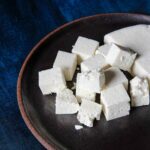LIVING WITH THE STAR
 Being the daughter of a RBI Banker, the late Mr. Suchandra Guhathakurta and Mrs. Rani Guhathakurta, Dr. Madhulika Guhathakurta is a Kolkata born Indian native who is an astrophysicist at NASA as well as the Lead Program Scientist for NASA’s initiative called “Living With a Star” (LWS) . Having grown up in an intellectual environment where there were more books in the household than there were furniture, and with a father who was a mathematician by training and a philosopher, Dr. Guhathakurta is an admirer of Tagore’s poetry, and of the night sky which has fascinated her since her childhood. After having received her Masters in Astrophysics from the University of Delhi, she moved to the U.S. at the age of 22 in order to pursue her PhD in Physics at the University of Denver. In 1993 she joined NASA, and in 1998 she begin working at the NASA headquarters, and throughout her career she has had the chance to work as a scientist, mission designer, instrument builder, directing and managing science programs and teacher and spokesperson for NASA’s mission and vision in the Heliophysics Divison. Having achieved much throughout her career, we sit down for a chat to find out more about her and her success as an astrophysicist at NASA. Dr. Madhulika Guhathakurta talks with Denisha Sahadevan about her life and experience in NASA.
Being the daughter of a RBI Banker, the late Mr. Suchandra Guhathakurta and Mrs. Rani Guhathakurta, Dr. Madhulika Guhathakurta is a Kolkata born Indian native who is an astrophysicist at NASA as well as the Lead Program Scientist for NASA’s initiative called “Living With a Star” (LWS) . Having grown up in an intellectual environment where there were more books in the household than there were furniture, and with a father who was a mathematician by training and a philosopher, Dr. Guhathakurta is an admirer of Tagore’s poetry, and of the night sky which has fascinated her since her childhood. After having received her Masters in Astrophysics from the University of Delhi, she moved to the U.S. at the age of 22 in order to pursue her PhD in Physics at the University of Denver. In 1993 she joined NASA, and in 1998 she begin working at the NASA headquarters, and throughout her career she has had the chance to work as a scientist, mission designer, instrument builder, directing and managing science programs and teacher and spokesperson for NASA’s mission and vision in the Heliophysics Divison. Having achieved much throughout her career, we sit down for a chat to find out more about her and her success as an astrophysicist at NASA. Dr. Madhulika Guhathakurta talks with Denisha Sahadevan about her life and experience in NASA.
WHAT IS YOUR SPECIALTY HERE AT NASA?
I am an astrophysicist by training and at graduate school I specialized in just one star, the Sun. In my research career I expanded this specialization to include the study of sun’s effects on earth. And today I am the science manager of a program called “Living with a Star” (LWS).
HAVE YOU GOTTEN TO DO ANYTHING UNIQUE WHILE WORKING FOR NASA?
I have done a lot of things that you may call unique!
From 1993-1998 at NASA’s Goddard Space Flight Center, I was the project scientist on “White Light Coronagraph” (WLC) experiment which was part of a payload on SPARTAN (Shuttle Pointed Autonomous Research Tool for Astronomy) 201 missions. This was a free-flying payload that studied the solar wind and the sun’s corona to increase our knowledge of sun’s effects on the Earth. This was truly an unique experience in that I was able to work in a laboratory for instrument and spacecraft development as well as interface with astronauts who were assigned to deploy this payload. In addition the science from these series of missions and Ulysses mission established the beginnings of sun-earth connection science.
At NASA headquarters, since 2001, I have been the Lead program scientist for a program called “Living with a Star” (LWS) within NASA’s Science Mission Directorate. This program is quite unique in that LWS plan consists of flight missions, supporting targeted research and technology, and small space environment test-beds (orbital laboratories for new LWS concepts), all with the objective of providing science with societal impact.
NASA’s LWS program gave rise to another initiative know as “International Living with a Star” (ILWS) where all the space faring nations (27) of the world come together to cooperate and collaborate on the system science of sun-earth and sun-solar system connections. I served as the chair of this group for the past four years and remain as a member on its steering committee.
With the help of LWS program I was able to produce three advanced graduate school level text books, (Heliophysics Vols I, II and III) published by Cambridge University Press. These are first of its kind text books to articulate the system science that LWS program strives to understand and to address the science of space weather. This new science is called Heliophysics.
Can you please tell us about the field of study of heliophysics?
Heliophysics wasn’t even a subject when I studied at the university. It is a brand new discipline which we have developed. It encompasses the study of the system composed of the Sun and its interaction with the planets and other objects in the solar system. It is a combination of many different sub-disciplines, solar physics, space physics and plasma physics. These are all very traditional sub-disciplines in our field that were all pursued separately, and heliophysics combines all of these different physics into one single discipline. Heliophysics can be described as an environmental science, a unique hybrid between meteorology and astrophysics. It is the science behind “space weather” which is weather outside of our atmosphere.
What weather phenomenon do we observe outside the Earth’s atmosphere?
We live in the outer atmosphere of the sun. All objects in the solar system experience space weather created by the Sun. Space weather can be described as conditions and phenomena in space and specifically in the near-earth environment that may affect space assets or space operations. Most of the time the Earth’s atmosphere and its own magnetic field protect us from the more violent effects of solar storms. But our communications, TV, weather, scientific and military satellites as well as our space explorers are subjected to the effects of space weather. Like weather on the Earth, Space weather comes in different forms and different strengths. However, space weather is governed by an 11-year solar cycle that allows us to predict, at some level, when effects are likely to be most severe. This period is called ‘solar maximum’ and is likely to occur between 2012 and 2015.
Modern society depends on a variety of technologies that are susceptible to the extremes of space weather. These events can disrupt the operation of power grids, railway signaling, magnetic surveying and drilling for oil and gas. Magnetic storms also heat the upper atmosphere, changing its density and composition and disrupting radio communications and GPS units. The storms’ charged particles can be a hazard to the health of astronauts and passengers on high altitude flights.
What impacts will Living with a Star Program have on our understanding of space weather?
Until recently, forecasters could barely predict space weather in the limited vicinity of Earth. Interplanetary forecasting was out of the question. This began to change in 2006 with the launch of the twin STEREO probes followed almost four years later by the Solar Dynamics Observatory. These three spacecraft now surround the sun, monitoring active regions, flares, and coronal mass ejections around the full circumference of the star. No matter which way a solar storm travels, the STEREO-SDO fleet can track it. This has improved our ability to predict space weather with longer lead time.
Can you please explain further the importance of knowing about the space weather and its relationship to Living with a Star Program?
As I mentioned earlier, more than 500 active satellites circle the Earth. We rely on them for TV, telephone, internet, GPS navigation and weather forecasting; all are vulnerable to space weather. Humans orbit Earth, too, onboard the International Space Station. The ISS is located inside Earth’s magnetic field, so it enjoys a degree of protection, but future astronauts en route to the Moon and Mars will be outside the magnetic bubble. Their spaceships are going to be in direct contact with the sun’s atmosphere.
NASA’s Living With a Star Program was formed in 2001 to deal with this reality. If we’re going to live inside the sun’s atmosphere, we need to learn more about it—especially how to predict the storms, The basic strategy is the same as weather studies on Earth: We’re going to launch a fleet of ‘weather stations’ – spacecraft that observe different aspects of sun’s atmosphere and its impact on Earth. LWS has four missions in various states of operation and development. Together they will surround and explore the sun-earth system in ways no spacecraft has done before.
The Solar Dynamics Observatory (SDO): Launched in February 2010 it is providing HDTV quality photographs of sunspots and solar flares, revealing the onset of storms in never-before-seen detail.
The Radiation Belt Storm Probes: There’s no point in studying the sun if we don’t understand what it does to Earth. Launched in August 2012, this mission makes the crucial Sun-Earth connection. Wisps of the sun’s atmosphere can become trapped by Earth’s magnetic field, inside radiation belts, where energetic particles lie in wait for astronauts and satellites trying to leave or simply orbit the planet. The Radiation Belt Storm Probes (two of them) will explore these regions and discover how they are populated and energized by space weather.
Solar Orbiter Collaboration: Solar Orbiter is a mission from the European Space Agency which will station itself at an inclination of about 30 degrees from the sun’s equator, providing the first truly polar view of solar magnetic field. The equatorial view from Earth limits studies of solar polar magnetic field—a problem Solar Oribter will remedy. It is in development for launch in 2017.
Solar Probe Plus: This is the most exciting mission of all. It is a heat-resistant spacecraft designed to plunge deep into the sun’s atmosphere where it can sample solar wind and magnetic fields in situ. No spacecraft has ever been as close to the sun as Solar Probe Plus will go, only 7 million km from the surface. That’s unexplored territory, and we expect to learn a great deal about the sun’s atmosphere by going there. It is in development for launch in 2018.
You came to the U.S. as a student to do your PhD in Physics, was it easy or tough for you as a student?
I went to a relatively small school where I was the only female graduate student in a class of 10-15 graduate students. Before my fellow graduate students got to know me, they were really upset with me because my grades were typically higher than theirs. This was a difficult situation but in about five months they got to know me as a person, and we became friends. While in India at Delhi University during my M.Sc., I never experienced this sense of resentment from my male classmates because I did better than them in exams. So the first time I felt discriminated as a woman was in my first few months of graduate school and I thought to myself that I have come from a third world country to a first world country and this is where I feel my first gender discrimination”! But since then I learnt to navigate the situation and never felt discriminated under any circumstance. What I realized is that once you get to know people all of these pre-conceived notions about people/gender etc dissolve and this is true in every situation in life whether it’s religion or race or something else, once you make the effort to get to know someone none of these barriers matter because ultimately we humans are allmore alike than not in our dreams and desires and pursuit of life.
India and China seem to be taking more of an interest in the space programs nowadays than the usual players such as U.S., Russia, and France. What is your opinion?
I think I am really glad that space is now becoming an international frontier. U.S., Russia, Europe, have already advanced in this area and India, and China still have to catch up to that. So the fact that these countries are taking interest in space science research and leading scientists, and engineers is a wonderful thing. With limited resources in every country I think we need a lot more players in this field. After all space doesn’t belong to any one country, it belongs to all.
What are your thoughts regarding India’s space program?
I am pleased to see that the Indian Space Research Organization has made great progress from an engineering standpoint with great achievements. Now I think that the country needs to enable it’s scientists so that they can be in the fore front of space science research.
Would you please tell us about the space cooperation between the U.S. and India?
Well there has been the Chandrayan Mission, where there was cooperation with the NASA and ISRO. There is a future dialogue going on for Mars mission and in general there is a good dialogue in space science cooperation between India and NASA.
Have you always aspired to be an astrophysicist?
When I think about it the answer is yes, I was always interested in science. From my very early years when I was a little girl in Kolkata I was absolutely fascinated by the night sky and always wondered about the stars. My aunt told me that when someone dies that person becomes a star in the sky and I wondered about where we came from and where are we going. These are just very fundamental human questions which I have always been intrigued by. I love the night sky.
Whether your career had given you one particular highlight?
I don’t know about one highlight. But I think what my career gave me is working with some of the best minds in the world. You know interaction with them on a daily basis. For me it is stimulating. And I don’t work with only NASA people, right? I have also been Chair for ILWS for four years and work with people all over the world, and they are about as smart as they get. I have loved sharing some of my knowledge with the general public. That is something that if I were just a pure researcher I wouldn’t have time for. That has been extremely joyful. At NASA, we are privileged to see, to know so many things that ordinary people don’t get a chance to experience – some of our imagery! I came up with a story line to share the LWS program and show some o these exquisite imageries. I helped in the creation of two major planetarium shows, “Cosmic Collisions” and “Journey to the Stars” in partnership with American Museum of Natural History in New York and National Air and Space Museum in DC. I also helped in the production of a 3D IMAX and planetarium show featuring the STEREO mission, “3D Sun”. These shows are running all over the world. Children, general public, older people, are learning something about the cosmos that they had no way of knowing otherwise. So these are some of the highlights, I would say.
Denisha Sahadevan








